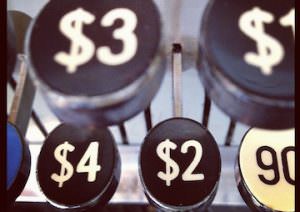The Big Economic Stall
Perhaps the most disturbing aspect of all this is that we’re in the fifth year of a supposed economic recovery from the second-worst economic downturn of the past century, and we’re still not nearly back on track. Instead, we’ve had the most anemic recovery in history.
This post originally ran on Robert Reich’s Web page.
Bad news on the economy. It added only 88,000 jobs in March – the slowest pace of job growth in nine months.
While the jobless rate fell to 7.6 percent, much of the drop was due to the labor force shrinking by almost a half million people. If you’re not looking for work, you’re not counted as unemployed.
That means the percentage of working-age Americans either with a job or looking for one dropped to 63.3 percent — its lowest level since 1979.
The direction isn’t encouraging. The pace of job growth this year is slower than its pace last year.
What’s going on? The simple fact is companies won’t hire if consumers aren’t buying enough to justify the new hires. And consumers don’t have enough money, or credit, or confidence to buy enough.
It’s likely Americans are beginning to feel the pinches of January’s hike in the payroll tax combined with the government budget cuts known as the sequester. Increases in gas prices haven’t helped. All are taking money out of the pockets of most people – whose job situation remains precarious. So they can’t and won’t buy much.
One indicator: Retailers cut their staffs in March — by 24,100.
Yes, the stock market has rebounded. But only a small portion of Americans are affected by the rebound. The richest 1 percent own 35 percent of all shares of stock; the richest 10 percent own 90 percent.
And, yes, housing prices have stopped falling, and construction of new homes has picked up. The construction sector added 18,000 jobs in March.
But the turnaround in housing isn’t because prospective homeowners have been able to get new mortgages. It’s because investors are buying or building homes to rent. And a buoyant rental market doesn’t make most people feel wealthier.
Perhaps the most disturbing aspect of all this is that we’re in the fifth year of a supposed economic recovery from the second-worst economic downturn of the past century, and we’re still not nearly back on track. Instead, we’ve had the most anemic recovery in history.
A Gallup survey released Thursday showed that the percentage of Americans holding full-time jobs has remained essentially unchanged over the past year. With 12 million people out of work and another 8 million holding part-time jobs who’d rather have full-time ones, this just isn’t nearly good enough.
We’re experiencing the burden of austerity economics and the continued scourge of widening inequality. Both are squeezing average Americans. Yet it’s impossible to have a buoyant and sustained recovery without a large and growing middle class.
Robert B. Reich, chancellor’s professor of public policy at UC Berkeley, was secretary of labor in the Clinton administration. Time magazine named him one of the 10 most effective Cabinet secretaries of the last century. He has written 13 books, including the best-sellers “Aftershock” and “The Work of Nations.” His latest, “Beyond Outrage,” is now out in paperback. He is also a founding editor of The American Prospect magazine and chairman of Common Cause.
Your support matters…Independent journalism is under threat and overshadowed by heavily funded mainstream media.
You can help level the playing field. Become a member.
Your tax-deductible contribution keeps us digging beneath the headlines to give you thought-provoking, investigative reporting and analysis that unearths what's really happening- without compromise.
Give today to support our courageous, independent journalists.





You need to be a supporter to comment.
There are currently no responses to this article.
Be the first to respond.